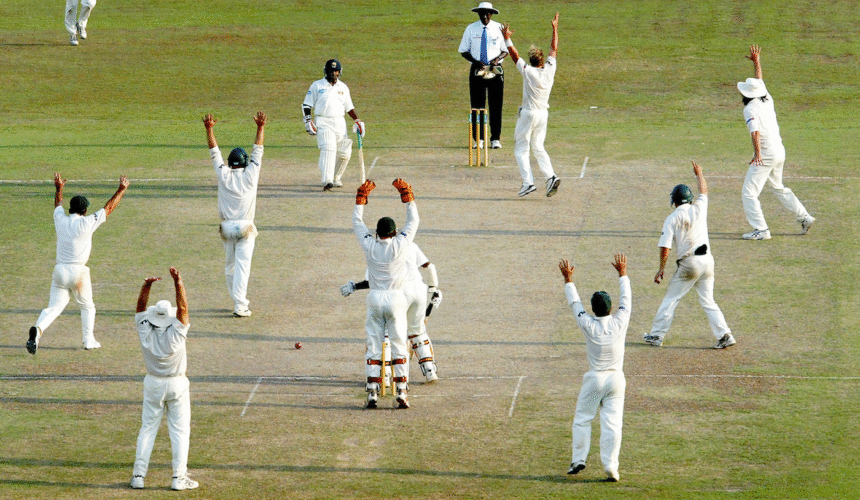Test cricket, the purest and oldest format of the game, is often considered the ultimate test of a team’s resilience, skill, and mental strength. Unlike the fast-paced excitement of T20 or the strategic tug-of-war of ODIs, Test cricket stretches players over five grueling days, demanding consistency, endurance, and class. While winning a single Test match is challenging, securing a string of victories in succession speaks volumes about a team’s dominance. In this article, we delve into the record for the most consecutive wins in Test cricket, exploring which team held the longest unbeaten stretch and how they managed to sustain it.
Australia – The Pinnacle of Test Dominance (2005–2008)
The record for most consecutive wins in Test cricket belongs to the mighty Australian team, which claimed 16 straight Test victories on two separate occasions. The first streak spanned from October 1999 to February 2001, and the second began in December 2005 and continued until January 2008. This level of dominance has not been matched since.
Under the captaincy of Steve Waugh and later Ricky Ponting, Australia fielded a team filled with legends: Shane Warne, Glenn McGrath, Ricky Ponting, Matthew Hayden, Adam Gilchrist, and Justin Langer, among others. Their formula was simple yet ruthless—bowl teams out twice and bat aggressively enough to demoralize the opposition.
The second 16-match winning streak began with a 2-0 victory over South Africa in 2005 and continued with clean sweeps against Bangladesh, England (including the famous 5-0 Ashes whitewash in 2006-07), Sri Lanka, and India. It eventually came to an end in January 2008 when India defeated Australia in Perth—a rare defeat for the Aussies at that venue.
The West Indies – Calypso Kings of the 1980s
Before Australia’s era of dominance, the West Indies ruled Test cricket with flair and fury. Between January 1984 and December 1984, they secured 11 consecutive Test wins, setting a benchmark that lasted over a decade.
Led by Clive Lloyd and later Viv Richards, the Caribbean side was blessed with a lethal pace attack comprising Malcolm Marshall, Michael Holding, Joel Garner, and Andy Roberts. Their batting unit, featuring Gordon Greenidge, Desmond Haynes, Richie Richardson, and Viv Richards, complemented their bowling perfectly.
The West Indies’ streak was a symbol of their all-round strength and mental toughness. They not only won matches but also intimidated opponents, often wrapping up games inside four days.
England – The Unsung Streak (2004)
While not as widely celebrated as Australia’s or West Indies’ runs, England had their own purple patch in 2004, winning 8 consecutive Test matches. Although they did not break the record for the most consecutive wins in Test cricket, their streak was significant in building momentum ahead of the legendary 2005 Ashes series.
Under Michael Vaughan’s leadership and the rise of pacers like Steve Harmison, Andrew Flintoff, and Simon Jones, England’s confidence and approach underwent a transformation. Their run was built on strategic bowling rotations and resilient batting from players like Marcus Trescothick and Andrew Strauss.
India – The Modern Test Powerhouse (2016–2017)
In recent years, India has emerged as a formidable force in the Test arena, especially in home conditions. Between August 2016 and March 2017, the Indian team, captained by Virat Kohli, recorded 9 consecutive Test victories. This put them in elite company in the race for the most consecutive wins in Test cricket.
What made this run unique was India’s ability to win in varied conditions, including turning tracks, green-tops, and even in matches where they had to recover from poor starts. The bowling attack feature spinners like Ravichandran Ashwin and Ravindra Jadeja, while the batting lineup was anchore by Cheteshwar Pujara, Ajinkya Rahane, and Kohli himself.
India’s dominance during this phase not only solidified their home supremacy but also set the tone for a team that would go on to beat Australia in consecutive series Down Under—a feat unmatched in Test history.
South Africa – The Quiet Achievers (2008–2012)
Between 2008 and 2012, South Africa often flew under the radar but consistently won Test matches, including a stretch where they were unbeaten in 15 consecutive Tests, with several wins on foreign soil. They achieved this with the likes of Dale Steyn, Morne Morkel, and Vernon Philander forming a lethal pace trio.
Their batting lineup, featuring Jacques Kallis, AB de Villiers, Graeme Smith, and Hashim Amla, was one of the most consistent in world cricket. South Africa’s away victories in Australia and England during this period marked them as a side capable of winning anywhere.
Why Do Long Winning Streaks Matter?
Achieving the most consecutive wins in Test cricket is not merely about having great players. It requires squad depth, effective leadership, and the ability to adapt to different conditions across continents. Consistency, mental fortitude, and preparation play a crucial role.
Moreover, maintaining physical fitness and managing workloads across a long tour schedule add layers of complexity. Modern teams often struggle to maintain such streaks due to packed calendars, the rise of T20 leagues, and rotational policies.
A Look at the All-Time Test Win Streak Leaders
| Team | Consecutive Wins | Period |
|---|---|---|
| Australia | 16 | 1999–2001, 2005–2008 |
| West Indies | 11 | 1984 |
| South Africa | 9 | 2002 |
| India | 9 | 2016–2017 |
| England | 8 | 2004 |
| Pakistan | 7 | 1988 |
Conclusion
When discussing the most consecutive wins in Test cricket, the numbers speak for themselves—Australia stands alone at the summit. Their dual streaks of 16 consecutive wins underline not just a period of dominance, but a legacy of excellence in Test cricket. While other teams have come close, Australia’s combination of skill, aggression, and tactical mastery set them apart.
However, Test cricket is as much about the journey as the records. Each streak, whether by West Indies, India, or South Africa, represents an era where that team elevated the game’s longest format and etched their names in cricketing folklore.











